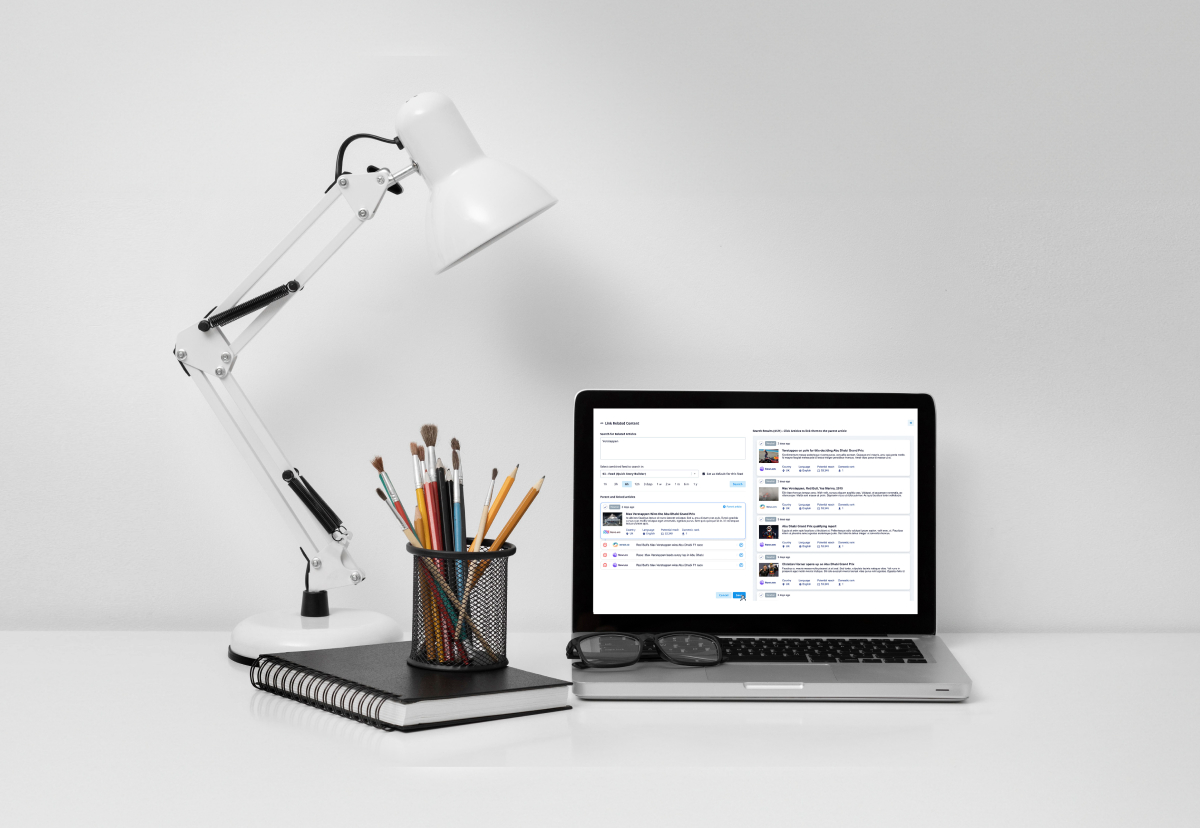Save this guide as a pdf
| Name | Size | |
|---|---|---|
| The-Ultimate-Media-Monitoring-Guide-2023.pdf | 4.1 MB | Download |
From the inception of the earliest newssheets in 16th century Italy, the quest for being the first and most informed has persisted. It wasn’t until 1852 that the seeds of modern media monitoring were sown, with the emergence of clippings services in London – a response to the hunger of artists seeking reviews about their work.
Fast forward three decades and Alfred Cherie’s creation of L’Argus de la presse in Paris laid the foundation for an industry that would revolutionize how individuals and entities engage with information.
Today, all types of organizations embrace the concept of media monitoring, recognizing its role in building pathways to success.
Media monitoring has evolved into a powerful instrument that enables organizations to decipher the sentiments of their customers, constituents, and donors. With an acute awareness of ongoing discussions, organizations can influence and not only participate.
As we’re often reminded, contemporary challenges require innovative solutions. The relentless pace of digitalization made massive amounts of information available and accessible to all of us. It wasn’t until 2003 that a software media monitoring solution entered the game, meant to serve as a navigational beacon amid an ocean of data. The purpose was to simplify and eventually automate the daunting task of processing and extracting value from an abundance of information.
In the following sections, we will delve into the mechanics of media monitoring, understand its pivotal role in modern business practices, and uncover the diverse benefits it gives those who harness its capabilities.
Table of contents
What is Media Monitoring?
Media monitoring offers a comprehensive lens to oversee your media presence across various media channels. Within this multifaceted landscape, these channels fall into two primary domains:
- Traditional Media: Old-school platforms like printed newspapers, magazines, television and radio. They have been around for a while and still shape opinions and form perceptions.
- Digital media: Modern platforms like social media, blogs, forums and online news. It’s where a lot of conversations and information sharing happens now.
Media monitoring is more than a mere practice. It helps you understand how the world perceives your organization. Tools collect activities from the media and transform them into simple charts or graphs, making it easy to see what you’ve been doing, where you can do better, how you can reply or what your next step should be.
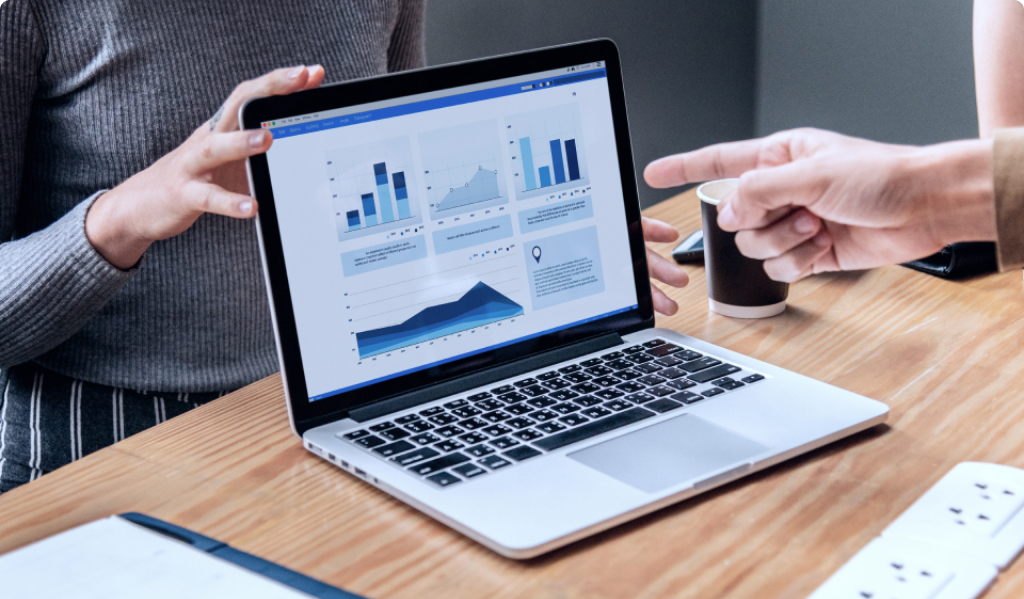
A powerful media monitoring tool doesn’t just look at today. It also checks out what happened in the past and what might happen in the future. This makes it easier to find helpful insights and make data-driven decisions.
The field has grown from being a good practice to an essential one in making good decisions. Experts say this trend is going to keep going, because organizations are using this to their advantage by finding their place in the market, connecting with customers, and staying ahead.
Why Media Monitoring Matters?
In today’s landscape, attention is a prized commodity. Whether you’re promoting your brand, products, or ideas, reaching your audience is pivotal. This underscores why media monitoring changed from a luxury into an absolute necessity.
According to Fortune Business Insights, the media monitoring industry has a value of 3.96 billion USD in 2022. Projections show growth up to 13.4 billion by 2030. The dominant share belongs to the retail and e-commerce segment, followed by the BFSI, IT and telecommunications industries.
In earlier days, media monitoring was a manual affair – a process consuming time and often lacking precision. However, with the advent of artificial intelligence and machine learning, much of the data collection, organization, and visualization has become automated. This shift allowed individuals to move beyond data collection and focus on its analysis.
This analysis transforms into actionable insights – gems of wisdom applicable in practice. How you employ these insights depends on your intended objectives.
Consider the few examples below that demonstrate how data-driven insights from media monitoring can be invaluable:
Reputation management
Understand how your brand is perceived by the public, helping you tailor your strategies for maximum impact.
Crisis Mitigation
Detect potential crises before they escalate, allowing you to proactively address issues and manage your reputation effectively.
Competitive Intelligence
Analyze your competitors’ strategies, gaining an edge by identifying untapped opportunities or adapting to emerging trends.
Customer Engagement
Gauge customer sentiment and preferences, guiding you to refine your offerings and resonate better with your audience.
Content Strategy Refinement
Fine-tune your content strategy by uncovering what resonates most with your audience, leading to higher engagement and impact.
Getting Started With Media Monitoring
Your journey begins with a series of strategic steps, from finding and collecting your data all the way to generating reports. Here’s how to get started:
Step 1: Define your keywords
Start by identifying the keywords related to your areas of interest. These keywords are your compass, directing the tool to seek content in line with your goals. As you compile your list of keywords, remember to input your preferred date range for monitoring. You can adjust it later as needed.
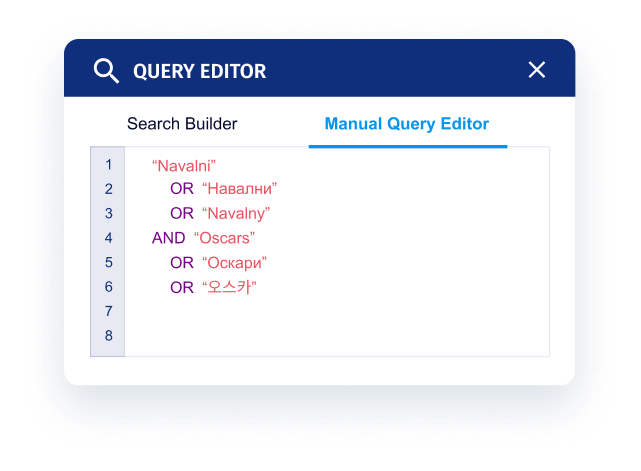
Step 2: Craft your query
With your content at your fingertips, scan for relevance. Should you encounter irrelevant content, refine your query by adding, modifying, or excluding keywords. Developing a well-crafted query ensures accuracy in your content. Many media monitoring tools provide filters to navigate with ease through content.
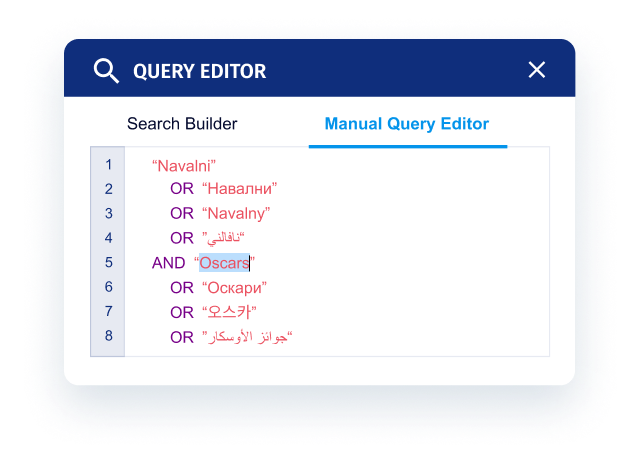
Step 3: Navigate metrics with widgets
Having your content neatly displayed on your dashboard, you can now move into the metrics. Most tools offer a set of predefined widgets for immediate analysis. Certain tools like Sensika, give you the flexibility to curate your widgets from an expansive library, with options to customize them. This marks the phase of data analysis, where you gather insights from your widgets and tailor your dashboard to your preferences.
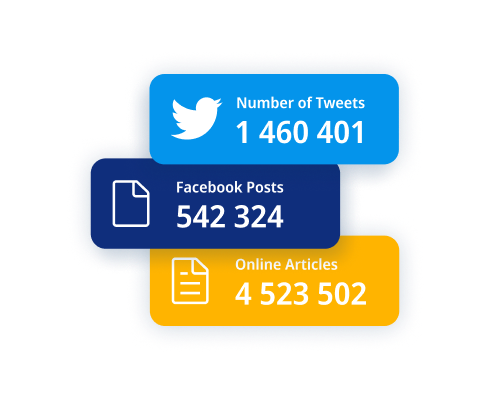
Step 4: Setup alerts
As you navigate, consider incorporating alerts into your strategy to notify you of newly published content, shifts in content volume, changes in sentiment, and more. Choose to receive these alerts via email or mobile notifications, if available. This ensures you’re always aware without accessing your tool for updates.
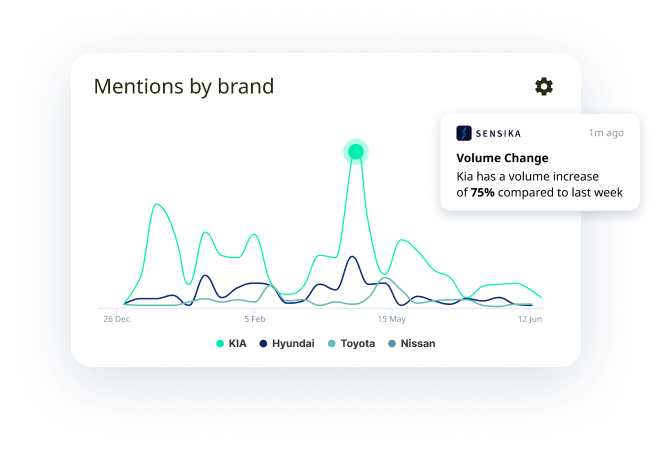
Step 5: Compile reports and collaborate with your team
With your dashboard all set, it’s time to leverage the insights you’ve found. Export your dashboard into comprehensive reports in several formats. The flexibility ensures that your insights are delivered in a manner that resonates with your team’s preferences and workflow. Some tools offer the option to incorporate your templates, ensuring your reports are informative and visually coherent with your branding.
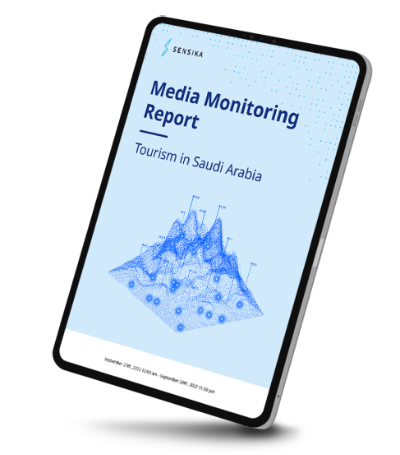
Remember that your reports are more than summaries – they are blueprints for strategic refinement, avenues for collaborative discussions, and milestones in your journey towards media mastery.
How is Data Analyzed?
Conducting the analysis using a media monitoring tool sparks the most enthusiasm for marketers. This is the most beneficial stage of the process, where you unravel actionable insights.
Every tool offers its exclusive library of visual metrics, transforming your content into digestible data you can comprehend and dissect. Here are some of the most frequently found metrics:
Share of Voice:
Displays your brand’s prominence relative to competitors within a given industry. This visual snapshot showcases your market presence and influence.
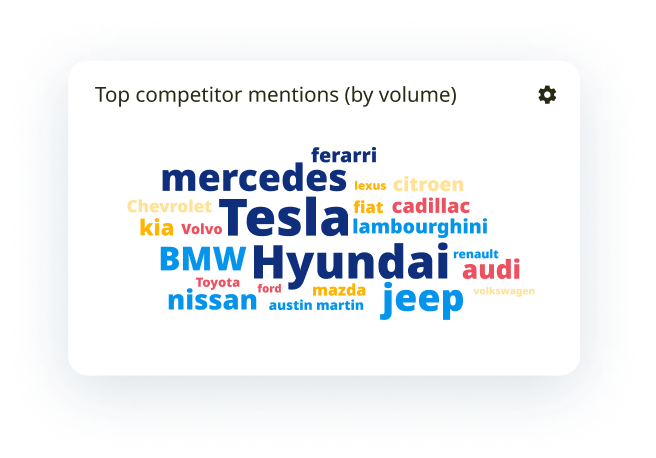
Sentiment Analysis:
Paints a visual of the sentiments surrounding your brand – positive, negative, or neutral – Empowering you with a better understanding of public perception.
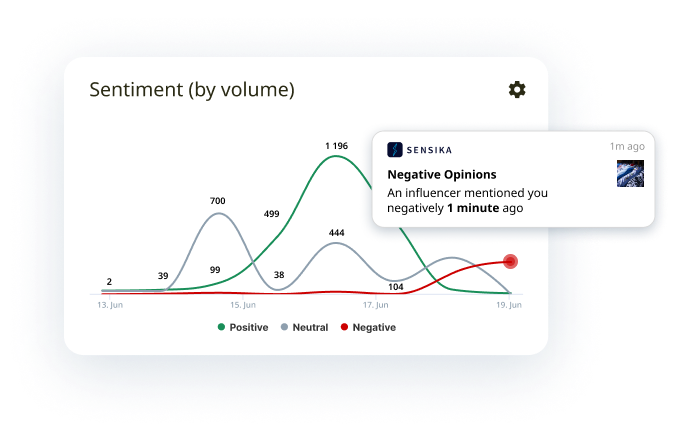
Reach and Impressions:
Creates a visual narrative to show how many people your content is reaching. Reach highlights unique viewers, while impressions reflect the total number of views, providing insights into your content’s exposure.
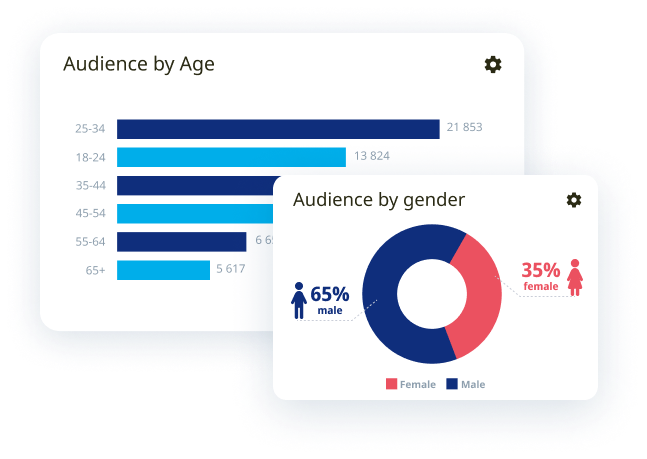
Influencer Engagement:
Spot key influencers discussing your brand. This metric gauges their impact and helps you harness potential collaborations.
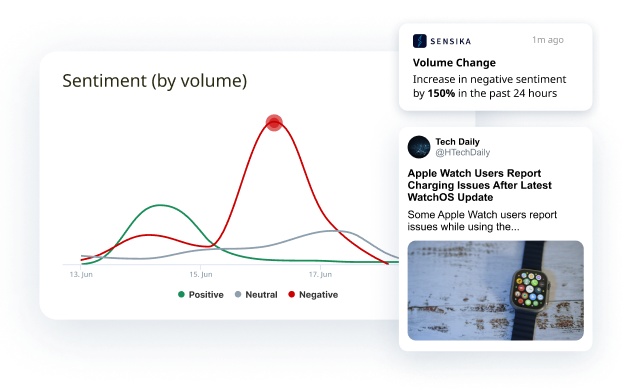
Trending Topics and Hashtags:
Reveals a visual gallery showcasing prominent topics and relevant hashtags within your industry. These visuals guide your content alignment and participation in ongoing conversations.
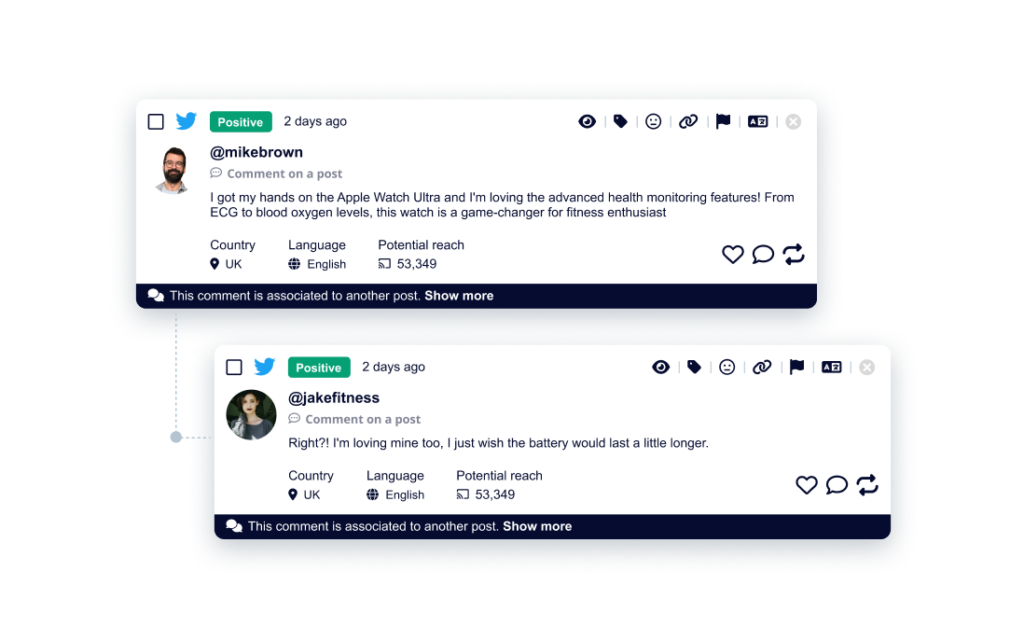
Who Can Benefit From Media Monitoring?
Media monitoring isn’t limited by sector – it’s a tool that can yield benefits for organizations of all stripes, as well as individuals engaged in marketing activities.
Agencies
Perhaps the most evident beneficiaries, agencies stand at the forefront. As stewards of their clients’ public relations and marketing, agencies rely on monitoring tools to measure the performance of their clients’ communication efforts. A clear view of these efforts ensures that clients’ goals are met and their strategies optimized.
Enterprises
Enterprises are another group that stands to gain. In the past, media monitoring was outsourced, due to its time-consuming nature. Yet, with the arrival of user-friendly tools and AI-driven automation, the setup phase has become the most time-intensive part. Once configured, marketers can log in daily to assess their brand’s performance across channels, leveraging insights for their strategic decisions.
Public Sector
Within the public sector, the challenges lie in navigating a crowded media landscape and connecting with their audience amidst the noise. Media monitoring tools empower these organizations to track specific topics of interest, capture public opinion on policies, identify areas for improvement, and even explore potential policy directions. This direct access to public sentiment informs decision-making and ensures alignment with citizens’ needs.
Companies working with Influencers
The rise of online shopping has propelled influencer marketing to new heights. Amid this landscape, media monitoring proves to be an invaluable tool. For companies looking to collaborate with influencers, these tools identify the most fitting voices based on factors like engagement, reach, activity, and audience demographics. Given the amount of potential choices, media monitoring helps you find the best influencers for your company, maximizing impact and resonance.
SMEs (Small and Medium Enterprises)
Frequently operating within the constraints of modest budgets and compact teams, SMEs find a valuable and cost-effective ally in media monitoring. These businesses place a premium on two key objectives: elevating brand awareness and establishing recognition among the right audience segments.
Their primary aim is to cultivate a devoted community of loyal customers, whose support serves as the bedrock of the brand’s enduring position in the market. Media monitoring proves indispensable in this context by offering data-driven insights that replace the often ineffective method of trial and error.
Armed with these insights, SMEs discover informed growth strategies, ensuring efficient resource allocation and impactful decision-making for long-term success.

Choosing The Perfect Media Monitoring Tool
What works for you comes down to a few fundamental considerations. Here’s a simple breakdown of what to keep in mind:
Assess your resources
Decide whether you have the time and manpower to undertake media monitoring in-house. Some media monitoring companies offer specialized services that might be more efficient than an in-house approach.
Define your coverage needs
Consider the extent of coverage you require. You don’t always need the most sophisticated tool. Rather, opt for one that aligns with your specific needs. If your intention isn’t to monitor multiple media channels or languages, a more focused solution would be preferable.
Research and demo
Before committing, dive into thorough research. Reach out to potential providers and request demos. This hands-on experience provides insights into the tool’s user-friendliness, the depth of its features, and most importantly, whether the price aligns with the value it offers to you.
Always remember that your choice of a media monitoring tool plays a pivotal role in optimizing your information gathering and analysis processes.
It’s an investment that should be underpinned by a profound understanding of your unique requirements and a well-informed evaluation of the available options.
For a more comprehensive guide on selecting the ideal tool, read our resource How to Choose a Media Monitoring tool.
This roadmap will provide you with an extensive framework to make the best choice for your needs.
What the Future of Media Monitoring Looks Like
Unquestionably the media monitoring industry has a bright future ahead. While the focus so far revolved around improving data harvesting and collection from as many sources as possible, there’s a shift to redefine how we approach data analysis.
A 2022 Salesforce report underlines that marketers’ top challenges are ineffective use of tools and technologies and measuring marketing attributions.

Rapid advancements in AI tools and their integration into media monitoring platforms have given us a glimpse into the future. Beyond streamlining a once manual, time-consuming process, machine learning and natural language processing technology will make identifying patterns and trends faster and more accurate.
The implications are profound. Organizations will gain a deeper understanding of their customers and competitors, speed up strategic decision-making, defend themselves better against threats and capitalize on big opportunities.
What’s more, the combination of Artificial Intelligence and human expertise promises to foster better analytics.
Takeaways
As we conclude this journey through the dynamic world of media monitoring, we leave you with key takeaways from our guide:
- Holistic Perception: Embrace media monitoring as a tool to gain comprehensive insights into your company’s footprint across a wide spectrum of media platforms.
- Essential in the Modern Landscape: In today’s era, characterized by the pursuit of attention, media monitoring emerges as a crucial practice, evolving from manual endeavors to streamlined AI-driven processes.
- Informed Decision-Making: Data-driven revelations harnessed from metrics such as Share of Voice, Sentiment Analysis, and Reach equip you with actionable insights that power effective decision-making.
- Universal Relevance: Regardless of the sector, any organization with a presence in the media will benefit from media monitoring.
- Expansive Industry Growth: The media monitoring industry is experiencing a consistent upward trend, promising enduring relevance and innovation.
If you’re still unsure if media monitoring aligns with your needs or would prefer to speak to an expert, we invite you to schedule a meeting with our team. This is an opportunity to discuss your company goals, challenges or a specific use case.
Media monitoring might be the missing piece to your strategic puzzle.
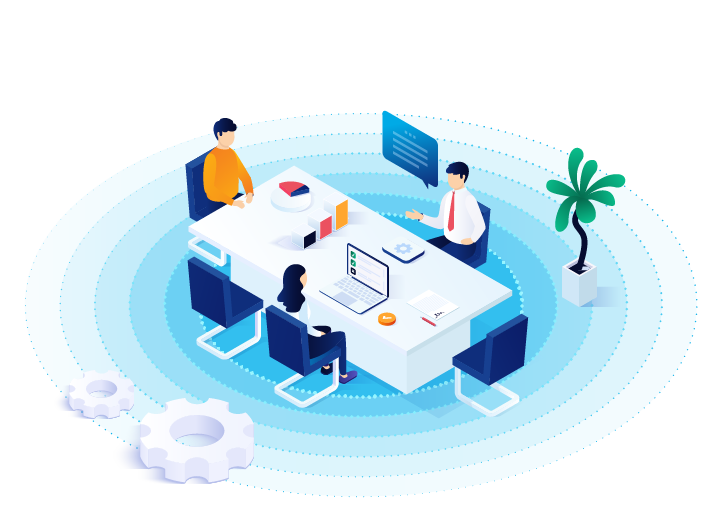
Get started by booking a meeting
Speak to one of our expert solution consultants and discover the power of media monitoring and data analytics.
Book a meeting
